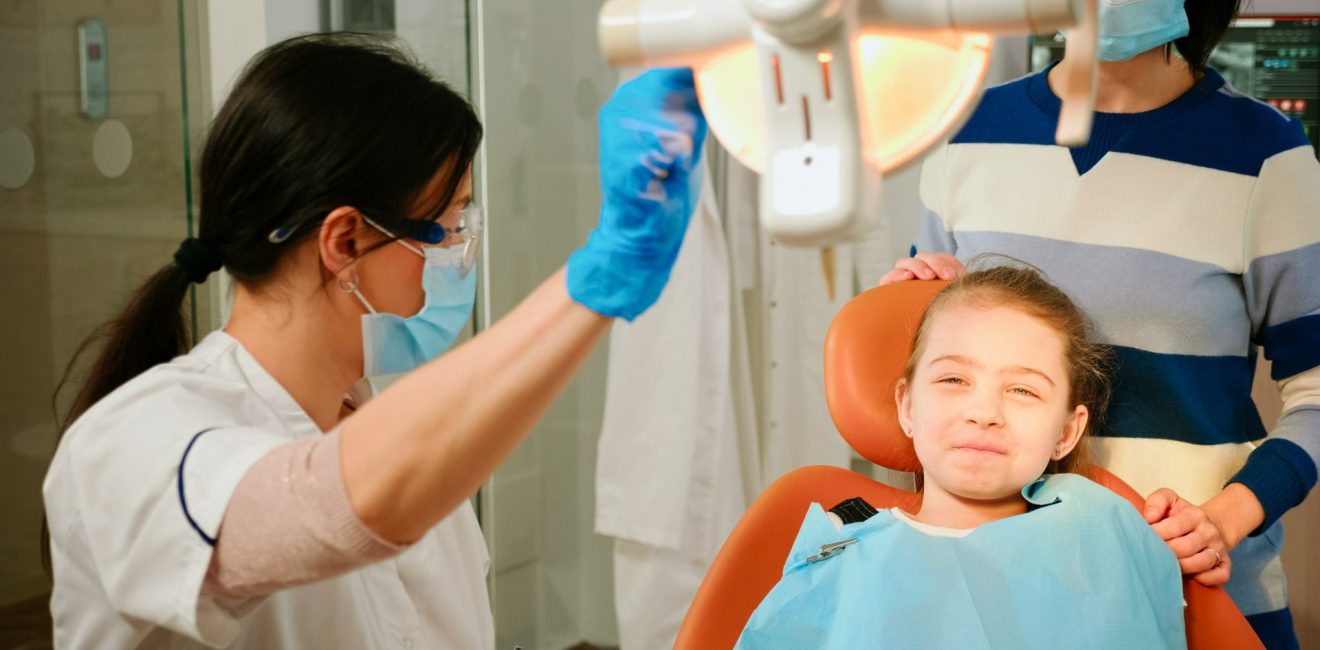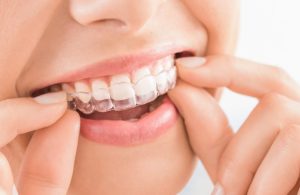Learn how to keep your kids cavity-free with expert tips on dental hygiene, nutrition, and healthy habits. Discover practical strategies for building strong oral health routines at home.
Raising cavity-free kids doesn’t happen by accident. It requires consistent effort, smart choices, and the right habits established early in life. As a parent, you have the power to give your children the gift of healthy teeth and gums that will serve them well throughout their lives. By creating a foundation of good oral health practices at home, you’re setting your kids up for success and potentially saving them from painful dental problems down the road.
Key Takeaways
- Start oral hygiene habits before your child’s first tooth appears
- Make brushing and flossing fun activities rather than chores
- Limit sugary snacks and drinks, especially between meals
- Establish regular meal and snack times to reduce acid attacks on teeth
- Schedule dental checkups every six months starting by age one
- Lead by example with your own good oral health habits
- Create a supportive environment that makes healthy choices easy
Start Early: The Foundation of Cavity Prevention
Building cavity-free habits begins much earlier than most parents realize. Even before your baby’s first tooth appears, you can start laying the groundwork for excellent oral health.
Begin by gently cleaning your infant’s gums with a soft, damp cloth after feeding. This simple practice removes bacteria and milk residue while getting your baby used to having their mouth cleaned. Once that first tooth emerges, transition to a soft-bristled baby toothbrush with a tiny smear of fluoride toothpaste.
The key is consistency. Make oral care a part of your daily routine from the very beginning. When children grow up with teeth cleaning as a normal part of their day, they’re more likely to continue these habits independently as they get older.
Creating Positive Associations
Turn tooth brushing into a fun experience rather than a battle. Sing songs, tell stories, or let your child pick out their own special toothbrush. The goal is to create positive associations with oral care that will last a lifetime.
Master the Basics: Proper Brushing and Flossing Techniques
Teaching your children proper brushing and flossing techniques is one of the most important gifts you can give them. However, many parents aren’t sure about the best methods or when to start certain practices.
For brushing, use gentle circular motions rather than aggressive back-and-forth scrubbing. Teach your children to brush for two full minutes, covering all surfaces of their teeth including the fronts, backs, and chewing surfaces. Don’t forget the tongue, which harbors bacteria that can cause bad breath and contribute to tooth decay.
Most children need help with brushing until they’re around 6-8 years old and have developed the motor skills to do it effectively on their own. Even then, supervision and occasional assistance ensure they’re doing a thorough job.
Flossing should begin as soon as your child has two teeth that touch each other, usually around age 2-3. Start with floss picks or kid-friendly flossers to make the process easier. As with brushing, children will need help with flossing for several years.
Making It Fun and Engaging
- Use colorful toothbrushes that your child helps choose
- Play their favorite songs during brushing time
- Use a timer or brushing app to ensure they brush long enough
- Create a reward chart for consistent oral care
- Let them brush a stuffed animal’s “teeth” first
Smart Snacking: Nutrition for Strong Teeth
What your children eat and drink plays a huge role in their oral health. While you don’t need to eliminate all treats, understanding how different foods affect teeth can help you make smarter choices.
Limit sugary and starchy foods, especially sticky ones that cling to teeth. When your children do have treats, try to serve them with meals rather than as standalone snacks. This reduces the time that teeth are exposed to acid-producing bacteria.
Choose tooth-friendly snacks like cheese, nuts, vegetables, and fruits. These foods either neutralize acid in the mouth or help clean teeth naturally. Cheese is particularly beneficial because it contains calcium and phosphorus, which help strengthen tooth enamel.
Water should be your child’s primary beverage throughout the day. It helps rinse away food particles and bacteria while keeping the mouth hydrated. If your children drink juice, dilute it with water and serve it with meals rather than throughout the day.
Timing Matters
When your children eat is almost as important as what they eat. Frequent snacking keeps teeth under constant attack from acid-producing bacteria. Instead, establish regular meal and snack times with gaps in between to allow teeth to recover.
If your children need to snack between meals, choose options that don’t stick to teeth and encourage water drinking afterward.
Create a Cavity-Fighting Environment at Home
Your home environment plays a crucial role in supporting your children’s oral health. Simple changes can make healthy choices easier and more appealing.
Set up a well-organized bathroom space with each child’s toothbrush, toothpaste, and floss easily accessible. Consider installing a step stool so younger children can reach the sink comfortably. Good lighting helps children see what they’re doing while brushing.
Keep healthy snacks visible and easily accessible while storing treats in less convenient locations. This doesn’t mean completely hiding sweets, but making nutritious options the default choice.
Stock your refrigerator with tooth-friendly beverages like water and milk instead of sugary drinks. When children are thirsty, they’ll naturally reach for what’s available.
Lead by Example
Children learn more from what they see than what they’re told. When you prioritize your own oral health, brush and floss regularly, and make healthy food choices, your children are more likely to follow suit.
Make family oral care time a bonding experience. Brush teeth together, discuss the importance of healthy habits, and celebrate successes along the way.
Establish Consistent Routines
Consistency is key to building lasting healthy habits. Establish clear routines around oral care that become second nature to your children.
Morning and evening tooth brushing should happen at the same time each day, ideally after breakfast and before bedtime. This regularity helps cement the habit and reduces the likelihood of skipping sessions.
Create a bedtime routine that includes brushing teeth as one of the final steps. This ensures that teeth are clean before the long night ahead when saliva production decreases and bacteria can multiply more easily.
Weekend and vacation routines should mirror weekday practices as much as possible. Consistency across all days helps maintain the habit even when normal schedules are disrupted.
Age-Appropriate Responsibilities
Gradually increase your children’s responsibility for their oral care as they grow. Toddlers can hold their toothbrush and “help” with brushing. Preschoolers can squeeze toothpaste and rinse their mouth. School-age children can take more independent responsibility while still receiving supervision and guidance.
Professional Support: Working with Your Dental Team
While home care is essential, professional dental care provides crucial support for maintaining cavity-free teeth. Regular checkups allow dentists to catch small problems before they become major issues.
Schedule your child’s first dental visit by their first birthday or within six months of their first tooth appearing. Early visits help establish a dental home and provide personalized guidance based on your child’s specific needs.
Don’t wait until there’s a problem to seek professional care. Preventive treatments like fluoride applications and dental sealants can provide extra protection against cavities. Your dental team can also provide guidance on proper techniques and age-appropriate products.
When choosing a dental provider, look for professionals who specialize in pediatric care and create a comfortable, welcoming environment for children. Clinics like PureSmile offer comprehensive dental and orthodontic services designed specifically for families, helping ensure your children receive the specialized care they need.
Handle Challenges with Patience and Creativity
Every parent faces challenges when establishing healthy habits with their children. Resistance, forgetfulness, and changing schedules are all normal parts of the process.
When children resist brushing or flossing, try to understand the underlying cause. Are they tired? Is the toothbrush uncomfortable? Are they asserting independence? Addressing the root cause often leads to better cooperation than simply demanding compliance.
Use positive reinforcement rather than punishment. Praise good habits, celebrate milestones, and focus on the benefits of healthy choices. Avoid using dental problems as threats, which can create anxiety around dental care.
Be patient with the learning process. Building habits takes time, and setbacks are normal. Stay consistent with your expectations while remaining flexible in your approach.
Problem-Solving Strategies
- If morning routines are rushed, prepare toothbrushes the night before
- For children who forget to brush, use visual reminders or apps
- If taste is an issue, try different toothpaste flavors
- For children who resist help, give them some control over the process
- If bedtime brushing is skipped due to fatigue, move it earlier in the routine
Frequently Asked Questions
Q: How often should my child brush their teeth? A: Children should brush their teeth twice daily – once in the morning and once before bedtime. This removes plaque and bacteria that accumulate throughout the day and overnight.
Q: When should my child start using fluoride toothpaste? A: You can use fluoride toothpaste as soon as your child’s first tooth appears. Use a rice grain-sized amount for children under 3, and a pea-sized amount for children 3-6 years old.
Q: Are electric toothbrushes better for kids? A: Electric toothbrushes can be more effective at removing plaque, especially for children who struggle with proper brushing technique. However, manual brushes work well when used correctly. The most important factor is consistent, proper use.
Q: How can I tell if my child has a cavity? A: Early cavities may not cause obvious symptoms. Look for white or brown spots on teeth, complaints of tooth pain, or sensitivity to hot or cold foods. Regular dental checkups are the best way to catch cavities early.
Q: Should I be concerned if my child’s teeth look yellow? A: Permanent teeth naturally appear more yellow than baby teeth because they have thicker enamel. However, if you notice sudden changes in tooth color or are concerned about your child’s teeth, consult with your dentist.
Q: What should I do if my child swallows toothpaste? A: Small amounts of fluoride toothpaste are generally safe if swallowed occasionally. However, teach children to spit out toothpaste rather than swallowing it. If large amounts are swallowed, contact your dentist or poison control center.
Building cavity-free habits at home is one of the most valuable investments you can make in your child’s future health and well-being. By starting early, maintaining consistency, and creating a supportive environment, you’re giving your children the tools they need for a lifetime of healthy smiles.
Remember that developing good habits takes time and patience. Focus on progress rather than perfection, and celebrate the small victories along the way. Your consistent efforts today will pay dividends in your child’s oral health for years to come.
The combination of excellent home care, smart nutritional choices, and regular professional dental visits creates a powerful foundation for cavity prevention. By working together with your dental team and maintaining these healthy practices, you can help ensure your children enjoy strong, healthy teeth throughout their lives.
Most importantly, remember that you’re not alone in this journey. Professional dental teams are there to support you with guidance, treatments, and encouragement. With the right combination of home care and professional support, raising cavity-free kids is an achievable goal that will benefit your children for their entire lives.







